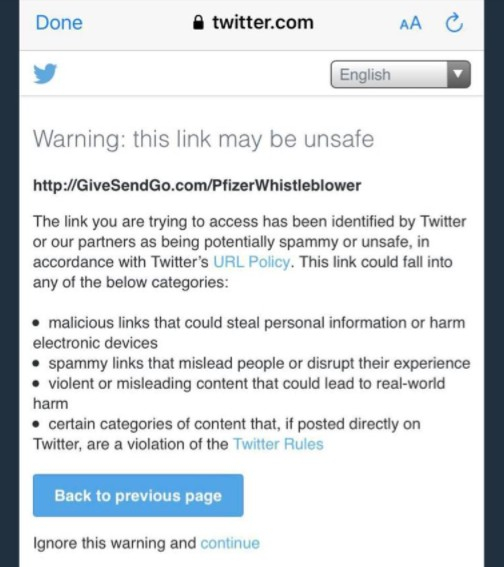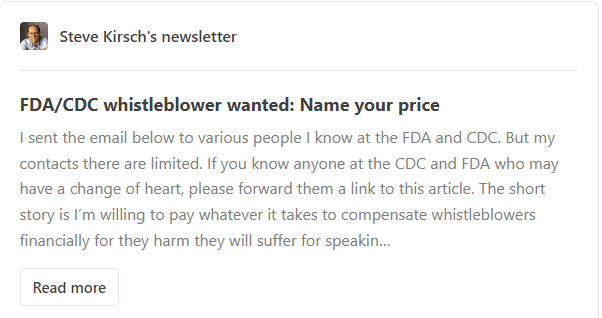Incentivize More Whistleblowers to Do the Right Thing
Donald Soeken conducted a study with 233 whistleblowers in government and the private sector. He found:
- 90% of the whistleblowers were fired or demoted
- 27% had lawsuits brought against them
- 26% sought psychiatric or physical care
- 17% lost their homes
- 15% got divorced
- 10% attempted suicide
- 8% were bankrupted
And yet only 16% said they wouldn’t do it again. But maybe it’s because these ones got through it…
A NY Times article covering this 1987 study stated, “Mr. Soeken said there are seven stages of life for the whistle blower: discovery of the abuse; reflection on what action to take; confrontation with superiors; retaliation; the long haul of legal or other action involved; termination of the case, and going on to a new life.”
Few make it to the last stage. In other words, whistleblowers go through hell.
While we know of quite a few successful cases, how many are effectively stamped out by such actions?
In The Tobacco Playbook I share the story of tobacco executive and scientist Jeffrey Wigand, which was also featured in the blockbuster movie, The Insider. He went through death threats, a coordinated media smear campaign, and legal actions against him. He stood strong and weathered all the attacks, so we know his story.
That all was decades ago.
Do you think the powerful have gotten better or worse at dissuading and stopping whistleblowers since that time?
How many whistleblowers don’t we know?
“Someone would talk” if 9/11 wasn’t what the officials said it was, right? Well, have you even ever heard the names of the whistleblowers Kevin Ryan, Cate Jenkins, Barry Jennings, Michael Springmann, William Rodriguez, and more?
Unless you’ve studied the subject, then of course not.
How many whistleblowers where the smears are more successful in controlling the narrative? How many whistleblowers are simply kept out of the mainstream media?
Whistleblowers may be the most devastating enemy of those in power. All the more reason for the powerful to use every tool possible to keep them quiet.
All the more reason for you and I, the people, to look at what they’re saying. And not only that, but support their courageous decisions to blow the whistle, standing up against power and abuse.
How do we do that?
These days, many whistleblowers are often going to Project Veritas to tell their stories. In addition to building a large following despite the smears and censorship, there is something else great that Project Veritas does. That is they help the people to support the whistleblowers directly through donations.
Every whistleblower has a campaign setup to accept donations. I personally have been financially supporting those that comes forth. Why? Because, as the stats show, almost every one of them loses their job for it at the very least.
The amounts I give are small, but lots of small donations really add up. Money is what keeps most locked into doing something they don’t want to do. It too often buys silence. Therefore, donations form the safety net, so that losing your job might not be so bad.
Before diving deeper into that there are some important things to recognize about whistleblowers today.
If what the whistleblower says matches the ideology of the news and forwards certain agendas, they will be giving mainstream media coverage. The whistleblower will be held up as a moral and courageous individual by the narrative.
If what the whistleblower says does not match the ideology of the news and stands in the way of certain agendas, they will be ignored if the threat is small enough or smeared if the threat is big enough. The full industry playbook can and will be thrown at them.
Knowing this, whistleblower’s treatment by the media gives you a very useful clue.
Julian Assange does not fit the classic definition of a whistleblower. However, WikiLeaks was a platform through which the whistle was blown, by people such as Bradley Manning (now Chelsea). Look at Assange’s treatment, from the rape allegations to the torturous imprisonment. Look at the media smearing him with all sorts of labels. Look at Manning’s treatment as well.
Contrast this to recent Facebook whistleblower, Frances Haugen, who gets the limelight. She’s on a big 60 Minutes piece. The media and politicians fawning over her. Why? Even if she legitimately believes what she is saying, which is very much possible, it helps move forward the agenda of greater censorship.
Compare her treatment to that of that of a Facebook whistleblower from just a few months prior, that Project Veritas helped leak. Data technician Morgan Kahmann leaked internal documents that showed Facebooks experiments to “Drastically reduce user exposure to vaccine hesitancy (VH) in comments”.
Did this Facebook whistleblower get any news coverage? A little bit on Fox, but not a peep anywhere else mainstream. Not surprisingly, he did get fired from Facebook for it.
Yet a total of $508,831 was raised for Morgan Kahmann. He wrote on the donation website:
“Throughout history, truth-tellers have received a lot of blowback. I knew this, yet could not sit idly by while Facebook enacted these Orwellian measures on its users. Due to my willingness to expose the truth about Facebook’s secret censorship of vaccine concerns, I have been let go from my job. I have a wife who is 7 months pregnant and a son who is 2 years old—we would appreciate any support you are able to offer at this time.”
By the way, the website GiveSendGo.com was used for most of this. They’re a Christian based funding website. Most importantly, they haven’t been removing fundraisers, censoring them, like the more well-known platform GoFundMe has done, such as with the Canadian Freedom Convoy.
This censorship playbook keeps evolving too! There was another whistleblower, this time from Pfizer, that leaked internal documents showing the company lied about using fetal tissues in development of their COVID vaccine, despite all their PR about being completely transparent.
This whistleblower, Pfizer Senior Director of Worldwide Research Vanessa Gelman, also came out with Project Veritas. She was fired for doing so. Not a peep about her on mainstream media.
A GiveSendGo campaign for her was created as well.
Twitter went so far as to slap a “possible spammy or unsafe” warning label on the link.

As censorship ramps up further, this fight may become even more difficult. Censorship resistant money, such as some forms of cryptocurrency, might become even more important.
Project Veritas is not the only one’s helping people blow the whistle but may be the biggest ones doing so actively today.
The Informed Consent Action Network is doing much the same. They have similarly helped people to support the whistleblowers that come forward, such as a nurse that gave insider details on the Vaccine Adverse Events Reporting System (VAERS). She’s lost her job as well.
What I’m calling the “Whistleblower’s Safety Net” needs two things. First of all, this needs more people to chip in. Even just a couple bucks can really add up when that comes from many different people. It will make a difference for these people, which sends a message to other would-be whistleblowers.
Essentially, we can collectively say, “Do the right thing, we’ve got your back.”
Another example of this is Steve Kirsch, who has tried to incentivize people from the CDC and FDA to come forward out of his own pocket.

Secondly, this idea needs propagation. Spread the channels that support whistleblowers that fight for the people (not for the tyrants).
Spread the idea of supporting those whistleblowers to help other’s in becoming part of the safety net.
